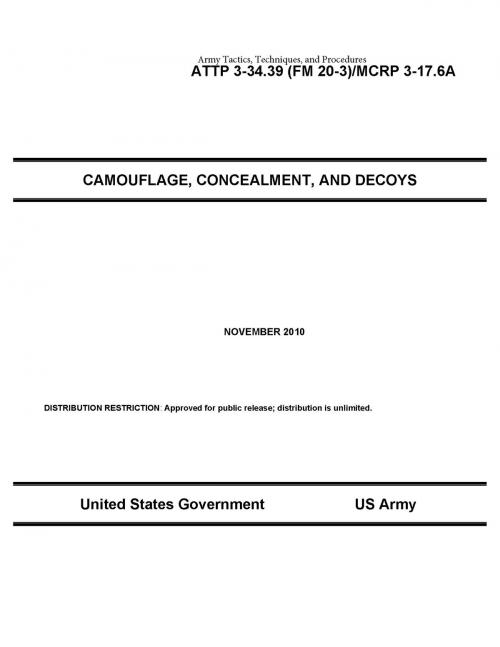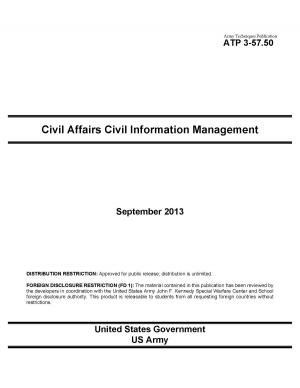Army Tactics, Techniques, and Procedures ATTP 3-34.39 (FM 20-3)/MCRP 3-17.6A Camouflage, Concealment, and Decoys November 2010
Nonfiction, Reference & Language, Study Aids, Graduate & Professional, Armed Forces, Science & Nature, Technology, Military Science, Reference, Guides & Handbooks| Author: | United States Government US Army | ISBN: | 1230000125898 |
| Publisher: | eBook Publishing Team | Publication: | April 19, 2013 |
| Imprint: | Language: | English |
| Author: | United States Government US Army |
| ISBN: | 1230000125898 |
| Publisher: | eBook Publishing Team |
| Publication: | April 19, 2013 |
| Imprint: | |
| Language: | English |
This Army Tactics, Techniques, and Procedures (ATTP) is intended to help company-level leaders understand the principles and techniques of camouflage, concealment, and decoys (CCD). To remain viable, all units must apply CCD to personnel and equipment. Ignoring a threat’s ability to detect friendly operations on the battlefield is shortsighted and dangerous. Friendly units enhance their survivability capabilities if they are well versed in CCD principles and techniques.
CCD is equal in importance to marksmanship, maneuver, and mission. It is an integral part of a soldier’s duty. CCD encompasses individual and unit efforts such as movement, light, and noise discipline; letter control; dispersal; and deception operations. Each soldier’s actions must contribute to the unit’s overall CCD posture to maximize effectiveness.
Increased survivability is the goal of a CCD plan. A unit commander must encourage each soldier to think of survivability and CCD as synonymous terms. Training soldiers to recognize this correlation instills a greater appreciation of CCD values.
A metric conversion chart is provided in appendix A.
This publication applies to the Active Army, Army National Guard (ARNG)/Army National Guard of the United States (ARNGUS), and the United States Army Reserve (USAR) unless otherwise stated.
The proponent of this publication is United States Army Training and Doctrine Command (TRADOC).
This Army Tactics, Techniques, and Procedures (ATTP) is intended to help company-level leaders understand the principles and techniques of camouflage, concealment, and decoys (CCD). To remain viable, all units must apply CCD to personnel and equipment. Ignoring a threat’s ability to detect friendly operations on the battlefield is shortsighted and dangerous. Friendly units enhance their survivability capabilities if they are well versed in CCD principles and techniques.
CCD is equal in importance to marksmanship, maneuver, and mission. It is an integral part of a soldier’s duty. CCD encompasses individual and unit efforts such as movement, light, and noise discipline; letter control; dispersal; and deception operations. Each soldier’s actions must contribute to the unit’s overall CCD posture to maximize effectiveness.
Increased survivability is the goal of a CCD plan. A unit commander must encourage each soldier to think of survivability and CCD as synonymous terms. Training soldiers to recognize this correlation instills a greater appreciation of CCD values.
A metric conversion chart is provided in appendix A.
This publication applies to the Active Army, Army National Guard (ARNG)/Army National Guard of the United States (ARNGUS), and the United States Army Reserve (USAR) unless otherwise stated.
The proponent of this publication is United States Army Training and Doctrine Command (TRADOC).















